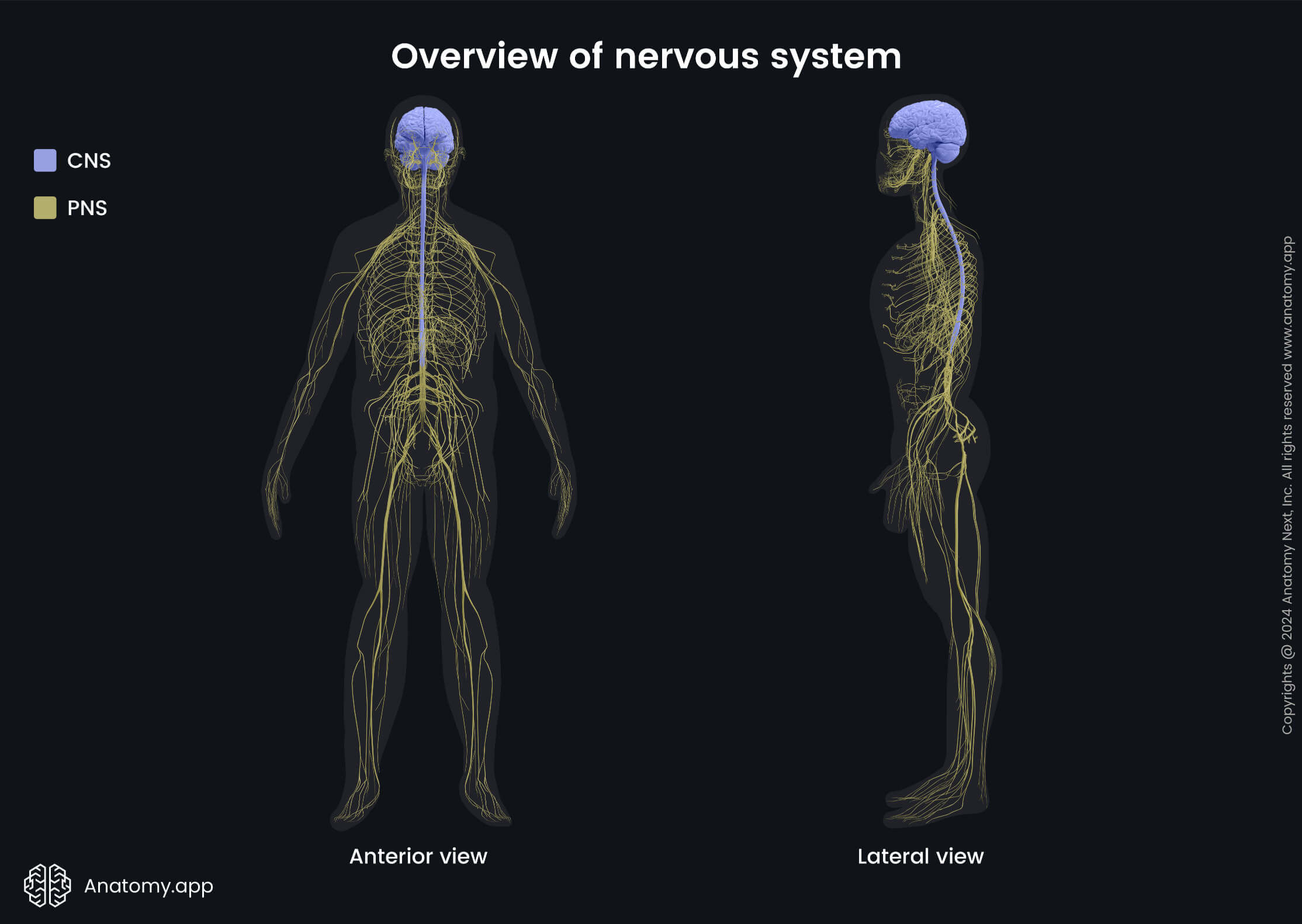- Anatomical terminology
- Skeletal system
- Joints
- Muscles
- Heart
- Blood vessels
- Lymphatic system
- Nervous system
- Respiratory system
- Digestive system
- Urinary system
- Female reproductive system
- Male reproductive system
- Endocrine glands
- Eye
- Ear
Central nervous system
The human central nervous system (CNS) is made up of the brain and the spinal cord. It is the processing center for the nervous system and consists of complex neuronal networks. Neurons are specialized nerve cells. The CNS receives and integrates information from and transmits data to the peripheral nervous system (PNS).

The brain integrates and coordinates sensory and motor information from the whole body. It is involved in organizing and generating voluntary and involuntary body functions and the formation of thoughts and feelings. With the help of the peripheral nervous system, the spinal cord connects the brain to the rest of the body.
The CNS is vital for the human body to function. Therefore, the brain and spinal cord are well protected. The neurocranium encases the brain, and the spinal cord is safeguarded by the spine. The brain and spinal cord are further covered by three layers of tissue known as the meninges: the dura mater, arachnoid mater, and pia mater.
Fun fact: The optic nerve (CN II) is the second cranial nerve and, therefore, often categorized as part of the peripheral nervous system. Nevertheless, the optic nerve actually belongs to the central nervous system because it originates from the diencephalon during embryonic development, and so is a direct extension of the brain.
References:
- Crossman, A. R., & Neary, D. (2019). Neuroanatomy: an Illustrated Colour Text (6th ed.). Elsevier.
- Vanderah, T. W., & Gould, D. J. (2020). Nolte’s The Human Brain (8th ed.). Elsevier.